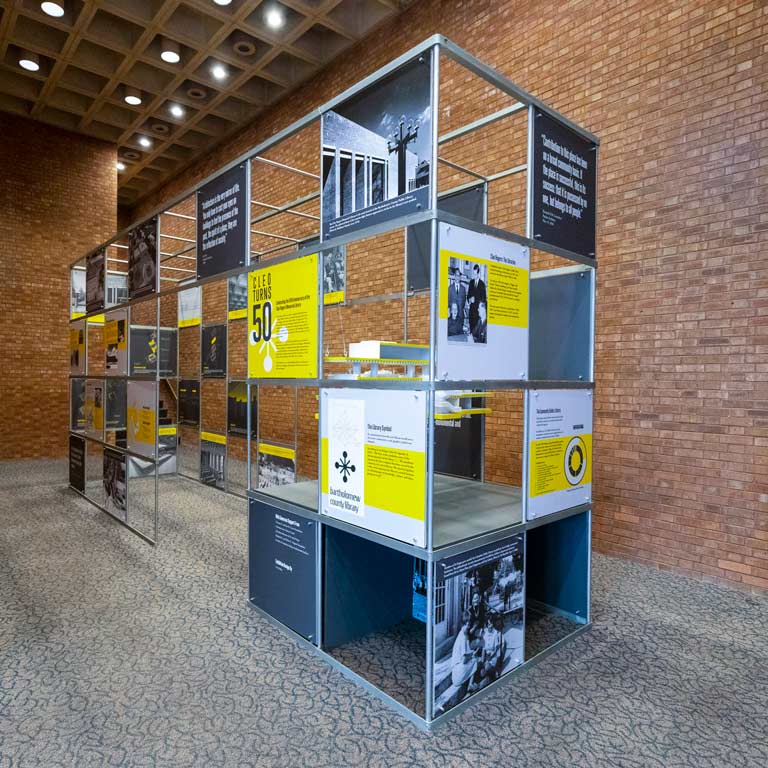Source: The Republic
This year we are celebrating the 50th anniversary of the Bartholomew County Public Library’s main branch building, the Cleo Rogers Memorial Library. Five years before the building’s construction, the library board voted to name the new library after librarian Cleo Rogers, who had long advocated for a new building to serve the changing needs of the growing community.
To learn more about this remarkable building designed by I.M. Pei, and about Cleo Rogers herself, visit the “Cleo Turns 50” exhibit at the main library.
Before I began working in museums and archives, exhibits seemed to happen by magic. Stories about history, art, or design told through images and objects unfolded before me. A good exhibit should be like a meal with friends: nourishing, convivial and engaging. Just as we all know that pleasurable meals with friends do not happen without effort, the same is true of exhibits.
I would like to share what it took to realize the “Cleo Turns 50” exhibit. In late 2018, I began planning the exhibit and deciding what story I wanted to tell. I knew the story should include how the building came to be, who the key people involved were, and what’s noteworthy about its design. Jason Hatton, BCPL’s director, encouraged me to see beyond the physical structure and to include how the library as an organization serves our community. I felt certain I could tell parts of the story, and I was equally certain I could not talk about the building’s architecture.
I turned to Lulu Loquidis and Daniel Martinez of LAA Office, a local landscape, art and architecture firm. Daniel tackled the architectural analysis, Lulu created the exhibit’s look and graphic design, and I focused on historical research. My research included perusing the library’s annual reports from 1909 to 2018, collating statistics from the last 50 years, reading perhaps 5,000 pages of letters and documents about the library’s design and construction, and viewing some 1,000 photos, slides, and negatives. Daniel pored over drawings of the library and studied other buildings Pei designed.
The three of us worked together for five months to develop and illustrate the story. We then drew in others to put all the pieces together: a copy editor to review the text, a photographer to take new pictures, a printer to fabricate the exhibit panels, a shop manager to lend expertise in building a model of the library. The list goes on.
Curating an exhibit is an iterative process. We begin with a general concept about the story we want to tell, and, through research, we explore both the storyline and the materials available to illustrate that story. As the story takes shape, we look for what we have left out and what we no longer need. With each draft, we return to source materials to ask how we might better tell the story. In any exhibit, we tell but one of the many possible stories held in those materials.
As with a meal with friends, we hope you find the exhibit nourishing, convivial and engaging.


